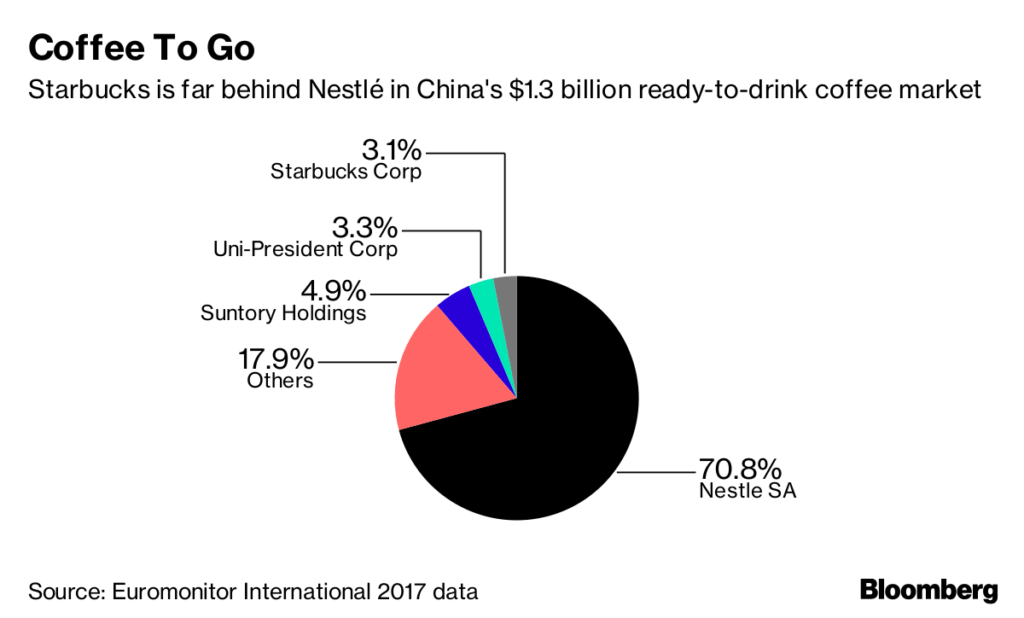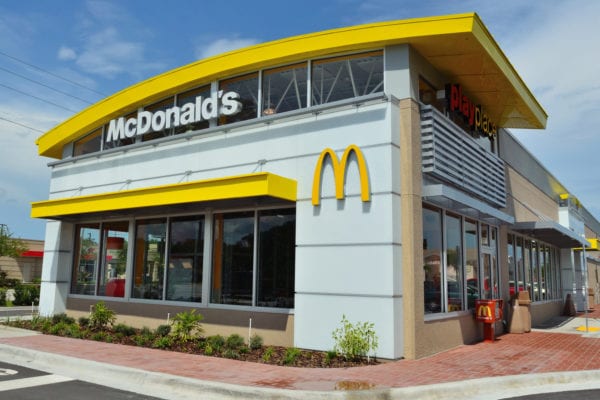Skift Take
Starbucks has the potential to grow faster in China then anywhere else, and since its growth has slowed in the U.S. it makes complete sense to turn that direction.
— Jason Clampet
Starbucks Corp. unveiled a bold plan to more than triple revenue in China over the next five years, at a time when other American corporates worry that simmering trade tensions may disrupt their businesses in the world’s second-largest economy.
Starbucks plans to weather trade tensions by focusing on its Chinese employees and customer base, Chief Executive Officer Kevin Johnson said in an interview in Shanghai on Tuesday. The coffee giant laid out plans to compete with KFC in the race to become China’s fastest-growing foreign food chain by opening a new store every 15 hours through 2022. It plans to have 6,000 stores on the mainland then, compared with a previous target of 5,000 by 2021.
“China has a long runway of opportunity for Starbucks,” Johnson said as the chain kicked off a two-day investor conference in Shanghai, the first to be held outside of the U.S. “We can’t control what happens in the geopolitical situation. We are not immune to it, but we take a long-term view.”

The vote of confidence comes as 120 U.S. companies and business groups line up to oppose the Trump administration’s plan to slap tariffs on $50 billion in Chinese imports. A hearing on the levies — where companies including Best Buy Co. and General Electric Co. as well as lobby groups such as the National Retail Federation plan to testify — began on Tuesday.
Starbucks is increasingly reliant on China, where it has no close rivals, to prop up underwhelming sales growth in the U.S. and elsewhere. A $7.2-billion deal with Nestle SA earlier this month gives the coffee giant the cash to pursue its goal of accelerating expansion in China, which is set to become Starbucks’ largest market within a decade.
The Seattle-based company also expects to more than double its operating profit in the country by fiscal year 2022. About 15 percent of Starbucks’ revenue came from its China and Asia Pacific markets — about $3.2 billion — in fiscal 2017, according to company data compiled by Bloomberg.
It currently has 3,300 outlets in China, compared with about 12,000 in the U.S., including licensed stores. Yum China Holdings Inc., which separated from Yum! Brands Inc. in 2016, said it had 8,112 stores including KFC and Pizza Hut at the end of March. KFC recently identified breakfast as a sales opportunity, and is now selling freshly ground coffee across China.
“Breakfast — this daypart has been growing very fast,” Yum China CEO Joey Wat said on a conference call earlier this month. “We offered exciting food choices and increased the convenience through pre-order.”
The push in the China market comes as its stores in the U.S. face fierce competition from up-and-coming regional coffee houses and steep discounting from fast-food rivals. Consumers also are shopping more at home, shunning brick-and-mortar retail for e-commerce. In China, where cafe culture is less mature but e-commerce more developed, Starbucks cafes have cornered the market on plush but casual meeting spots.
Johnson said that while same-store sales in the U.S. have been weaker than expected, strong performance in new stores stateside means it’s still on track “to deliver U.S. growth within the targeted range that we’ve given of high single-digits.”
The company’s stock gained as much as 1.2 percent to $57.33 on Wednesday in New York. It had lost 1.4 percent this year through Tuesday’s close.
Nestle Deal
The Starbucks deal, which gives Nestle the right to market Starbucks products from beans to capsules, will also give the Seattle coffee brand access to a whole new market in China. Switzerland-based Nestle can now sell Starbucks-branded packaged coffee products in Chinese supermarkets, restaurants and catering operations. That’s something Starbucks hasn’t done previously in the country.
Nestle’s relationships with distributors, giving it access to 1.5 million outlets in China, “dramatically accelerates our ability to bring those coffees to market,” said Johnson. Introducing these products to China will be “one of the priorities that we focus on early” after the transaction closes, he said.
Besides the flagship Starbucks brand, the accord with Nestle includes the brands Seattle’s Best Coffee, Starbucks VIA, Torrefazione Italia and Teavana tea.
Nestle and Starbucks also plan to partner on efforts to make coffee a sustainable agriculture product, through research and development and farmer support, said Johnson.
In the market for ready-to-drink coffees, Starbucks remains in competition with Nestle. Besides its bottled Frappucinos and cold brews, the company will add chilled cups in June. Johnson said the company has a whole pipeline of innovation in ready-to-drink coffee products.
The 8.1 billion yuan ($1.3 billion) ready-to-drink coffee market in China is currently dominated by Nestle with 71 percent market share, according to data from Euromonitor International. Starbucks has 3.1 percent.
The coffee giant will also announce in a few months a new program for mobile ordering and delivery in China, said Starbucks China CEO Belinda Wong. Currently, 60 percent of transactions in its China stores are through mobile payment.
The growth is helping the coffee chain create 10,000 jobs a year in China. There, the company is keen to set itself apart by offering generous employee benefits, including health insurance for the parents of employees in a country where children often care for aging family members.
“We have built a business here in China over 20 years,” Johnson said. “We have built that business in China, for China.”
–With assistance from Leslie Patton.
©2018 Bloomberg L.P.
This article was written by Bloomberg News from Bloomberg and was legally licensed through the NewsCred publisher network. Please direct all licensing questions to [email protected].
![]()



